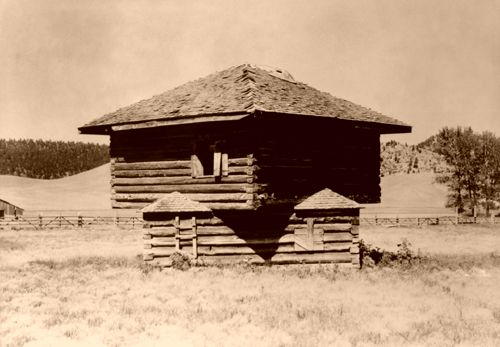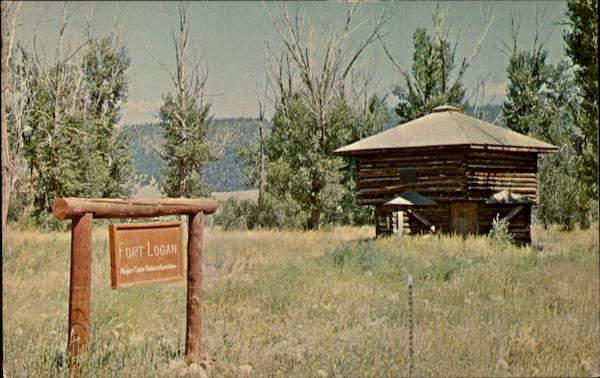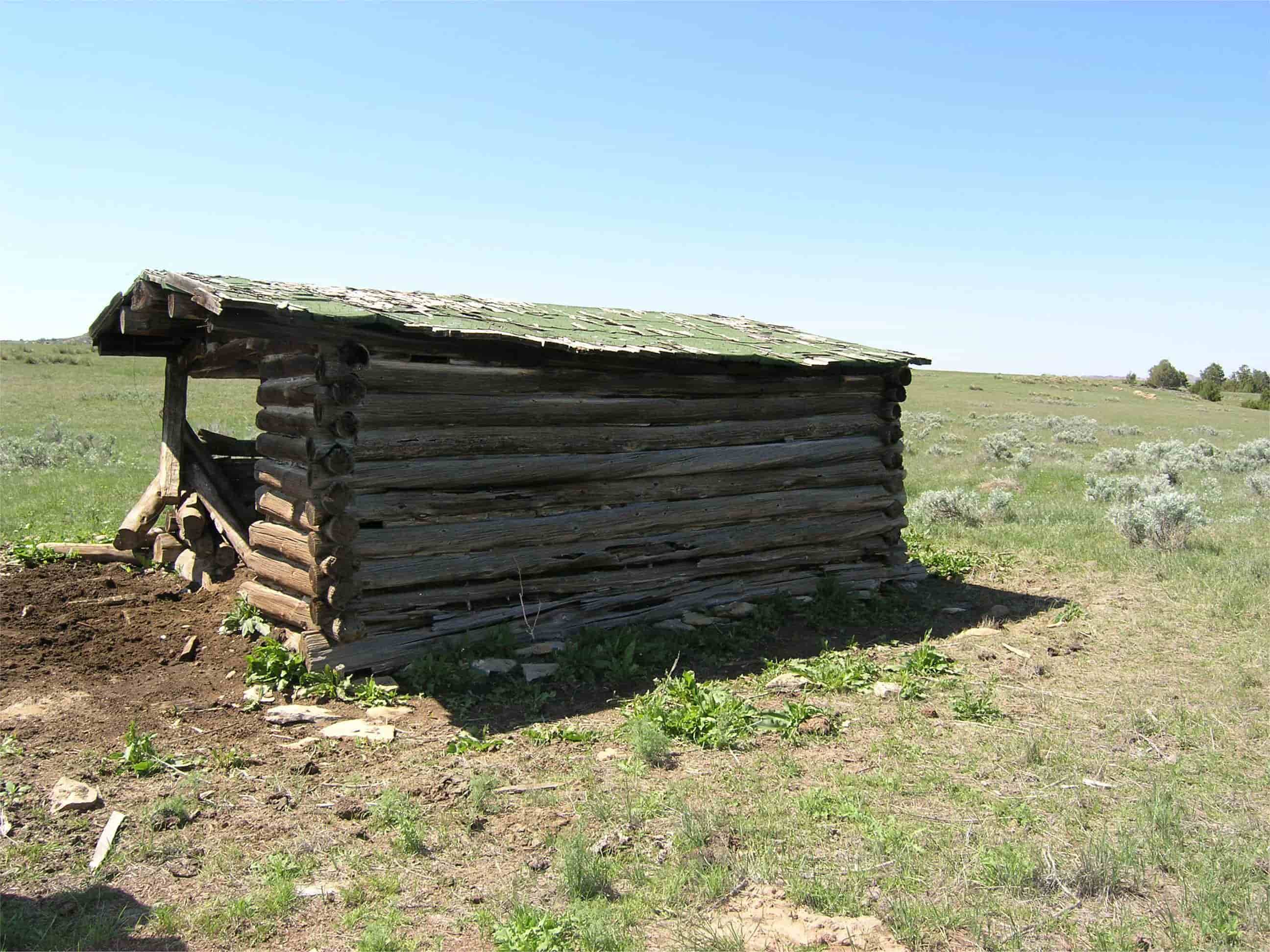
The Silent Sentinel: Unearthing the Forgotten Saga of Fort Logan, Montana
In the vast, untamed heart of Montana, where the prairie stretches endlessly towards the towering peaks of the Rocky Mountains, lies a ghost. Not a spectral figure haunting the desolate plains, but a ghost of history – Fort Logan. Today, its weathered remains whisper tales of a bygone era, a period of fierce expansion, brutal conflict, and the forging of a new American identity on the raw frontier. To visit Fort Logan is to step back in time, to feel the biting winds that once chilled the bones of soldiers, and to ponder the complex legacy of a nation pushing its boundaries, often at great cost.
Fort Logan, established in 1869, was not one of the grand, heavily fortified bastions like Fort Laramie or Fort Ellis. Instead, it was a smaller, vital cog in the machinery of Manifest Destiny, strategically positioned in the fertile Smith River Valley, approximately 30 miles east of present-day White Sulphur Springs. Its primary mission was clear: to protect the burgeoning flow of settlers, miners, and freighters streaming into Montana Territory, particularly those traversing the Bozeman Trail and other routes threatened by the indigenous tribes whose ancestral lands were being encroached upon.
The late 19th century in Montana was a crucible of cultures. Gold rushes had ignited a feverish influx of white prospectors and entrepreneurs, leading to the rapid development of towns like Helena and Virginia City. This expansion, however, directly clashed with the way of life of the powerful Native American nations, including the Crow, Blackfeet, Northern Cheyenne, and the occasional movements of the Nez Perce. The U.S. government’s response was a policy of pacification, often achieved through military force, and the establishment of a network of forts became essential to enforce treaties, guard supply lines, and project federal power.

Named in honor of Major General John A. Logan, a distinguished Civil War veteran and later a U.S. Senator, the fort was constructed by the very troops who would garrison it. Imagine the arduous task: hauling timber, digging foundations, and erecting barracks, a commissary, a hospital, guardhouses, and stables in a remote wilderness, often under the watchful eyes of potential adversaries. The initial structures were simple, utilitarian affairs, built to withstand the harsh Montana climate rather than elaborate architectural standards.
Life at Fort Logan was a testament to the ruggedness and isolation of the frontier soldier. Far from the comforts of civilization, the typical garrison consisted of around 100-150 men, mostly infantry, along with their officers and a smattering of support staff. Their days were a monotonous cycle of drills, guard duty, maintaining the fort, and the ever-present task of scouting the vast surrounding territory. Winters were particularly brutal, with temperatures plummeting far below zero and snowdrifts often reaching the eaves of the low-slung buildings. Supplies were infrequent, often arriving via arduous wagon trains from distant depots, making self-sufficiency and resourcefulness paramount.
"The isolation was a cruel mistress," one could imagine a soldier writing in a diary, if such records had survived the passage of time. "Days bleed into weeks with nothing but the same faces, the same routine, and the endless horizon. Yet, there is a strange beauty to it, a wild freedom that seeps into your bones." This sentiment, a mix of hardship and awe, was common among those who served on the frontier. The nearest significant settlement was often days away by horseback, making social interaction beyond the fort’s confines a rare luxury. Letters from home were treasured connections to a world left behind.
While Fort Logan never saw a major pitched battle on its immediate grounds, its strategic importance was undeniable. It served as a critical staging post for patrols, a supply depot for troops on campaign, and a refuge for settlers during times of heightened tension. During the tumultuous Nez Perce War of 1877, when Chief Joseph led his people on an epic flight across Montana, Fort Logan played a role as a point of readiness and communication, with troops from the fort likely engaged in scouting and logistical support, though not in the decisive battles. The fort’s presence alone was often enough to deter smaller raiding parties and instill a sense of security, however tenuous, among the scattered homesteaders.
Local historian Martha Jenkins notes, "Fort Logan wasn’t just a collection of buildings; it was a symbol. For the settlers, it represented protection and the promise of a future. For the Native American tribes, it was another stark reminder of the relentless advance of the white man, a point of grievance and resistance." This dual perspective is crucial to understanding the fort’s place in history. It stood at the very intersection of conflicting worldviews, a physical manifestation of an ideological struggle.
The fort’s existence, however, was relatively brief. By the late 1870s and early 1880s, the dynamics of the frontier had shifted dramatically. The major Native American conflicts had largely subsided, with most tribes confined to reservations. The transcontinental railroad was rapidly expanding, rendering many traditional wagon trails obsolete and making remote forts less essential for supply and communication. The "frontier" was being tamed, settled, and crisscrossed by new infrastructure.
In 1880, after only eleven years of active service, Fort Logan was officially decommissioned. Its purpose had been served, its utility diminished by the very progress it had helped facilitate. The troops were withdrawn, and the federal government offered the buildings and land for sale. Many of the structures were dismantled, their timbers repurposed by local ranchers and farmers eager for building materials. Some simply fell into disrepair, succumbing to the harsh elements.
What happened next is a common fate for many frontier outposts. A small civilian settlement grew up around the abandoned fort, clinging to the remnants of its former life. A post office, a general store, perhaps a saloon – the typical accoutrements of a nascent Western town. For a time, it was a hub for the surrounding ranching community. But without the military presence, without a railroad connection to sustain it, the town of Fort Logan struggled. The nearby railway town of "Logan" (named after the same general) developed miles away, drawing away commerce and population.

Today, Fort Logan exists as a poignant relic. The site is privately owned, adding to its mystique and the challenge of public access, yet its spirit remains. What greets the intrepid visitor are not perfectly restored buildings, but rather the skeletal remains of stone foundations, a few remarkably preserved log structures, and the silent dignity of a small, windswept cemetery where soldiers and early settlers lie buried. The commissary building, remarkably, stands as one of the best-preserved structures, offering a tangible link to the past.
The landscape itself tells much of the story. The vastness, the silence broken only by the wind and the call of birds of prey, evokes the profound isolation that defined life here. One can easily imagine the sentries peering out from the blockhouses, scanning the horizon for signs of movement, or the bugle calls echoing across the valley at dawn and dusk. The historical markers, though few, provide glimpses into the lives lived and lost in this remote corner of Montana.
Fort Logan serves as a powerful reminder of a pivotal, often violent, period in American history. It encapsulates the ambition of a young nation, the courage and hardship endured by its soldiers and settlers, and the tragic displacement suffered by its indigenous peoples. It forces us to confront the complexities of westward expansion – the promise of new lives and opportunities balanced against the destruction of established cultures and the environmental toll.
In an age of instant communication and rapid development, the forgotten fort stands as a silent sentinel, a testament to the impermanence of human endeavors and the enduring power of the land to reclaim its own. It is a place where history is not just read in books but felt in the dust beneath one’s feet and heard in the whispers carried on the wind. Fort Logan, Montana, is more than just ruins; it is a historical echo, inviting contemplation on the costs and triumphs that shaped the American West. Its saga, though largely unsung, remains a vital thread in the rich, complex tapestry of Montana’s past.


